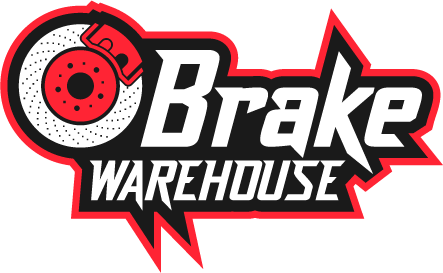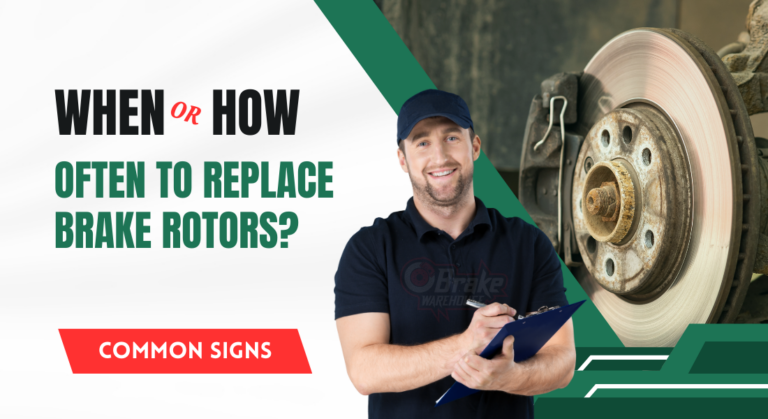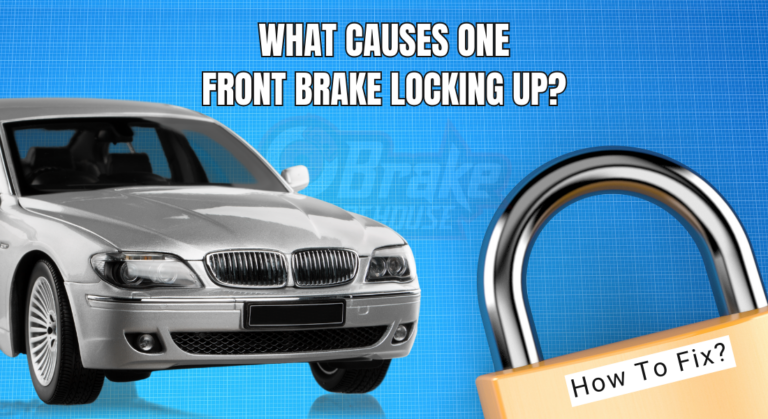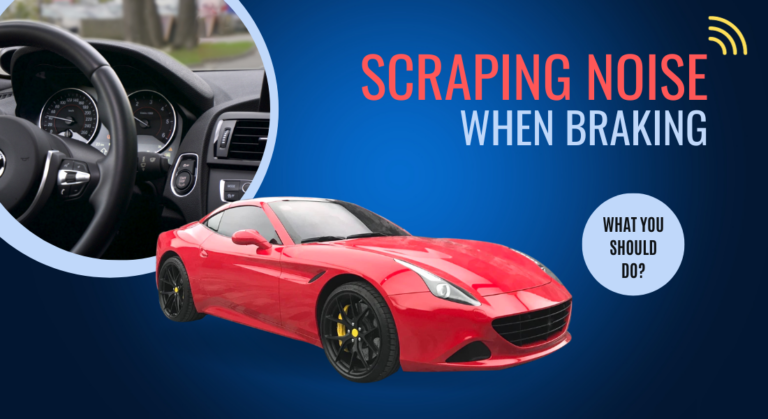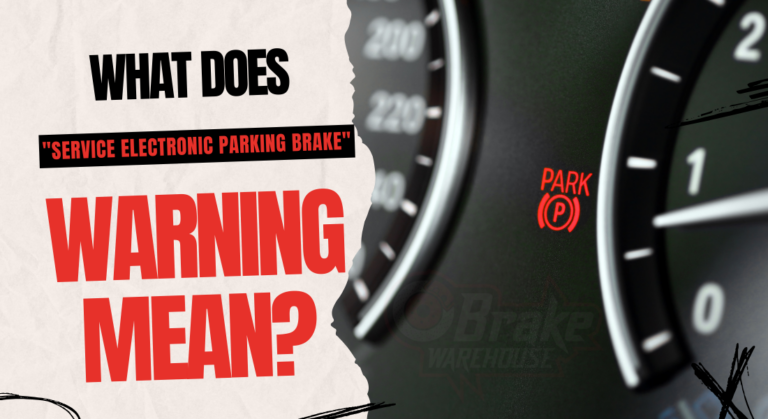Why Do New Brakes Make Thump Noise? 6 Reasons To Check
Having a car provides the coveted freedom many desires in life, yet it also brings challenges, particularly regarding maintenance. Discovering a thumping sound after installing the new brake can be quite concerning.
The likely culprits include low tire pressure, worn-out struts or shocks, CV joints, or ball joints. While some of these issues are minor and easily resolved, others demand urgent attention from a skilled mechanic.
This guide will help you in identifying why does new brakes make thump noise and solution, helping you restore smooth operation.

Why does New Brakes Make Thump Noise?
Numerous factors can contribute to the thumping sensation in your car’s new brake. Below is a compilation of the most prevalent causes for this sound, Also, you will get guidance on resolving the issue, and an estimate of the associated costs.
1. Installing Different Tire Types
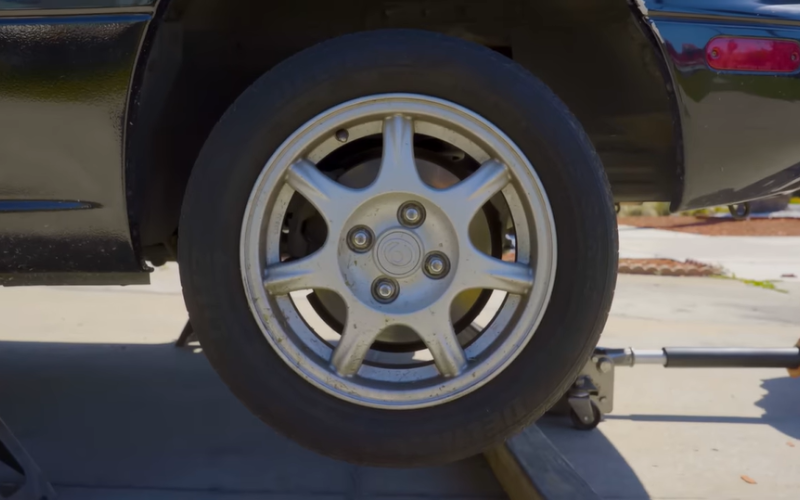
Have you recently replaced your tires and noticed an unfamiliar thumping noise while driving?
You may be encountering this noise because you’ve switched to different tires.
The noise generated by tires can vary depending on the materials used in their construction. For instance, fiberglass tires offer a smoother and quieter ride due to their softer composition.
On the other hand, steel-belted tires tend to produce more noise. However they are renowned for their durability.
There’s no need to be overly concerned; the newfound thumping noise might be a characteristic of your new tires. However, if the noise worsens or doesn’t align with typical tire sounds, it is necessary to seek professional advice.
2. Unevenly Installed Tires
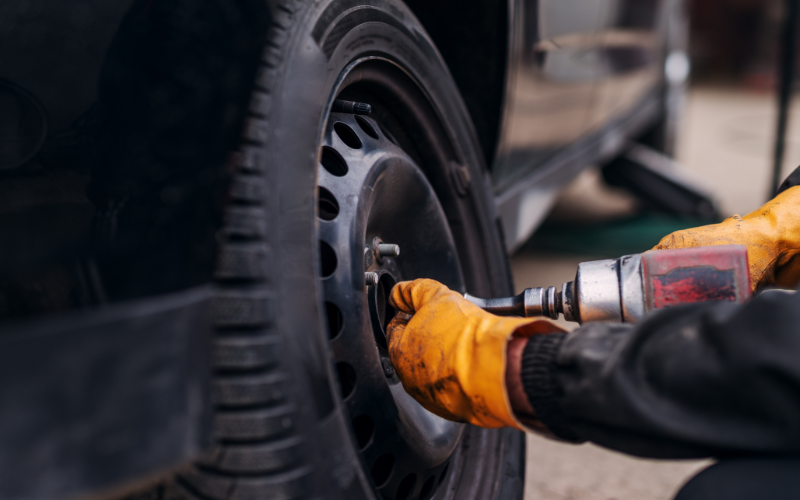
A straightforward method to determine if your tires are uneven is to drive slowly on a quiet, smooth road and release the steering wheel. If your car veers to one side, it’s time to inspect the tread on all your tires.
To do this, evenly moisten all 4 tires and drive the length of a car’s body forward. This will reveal any irregularities in the water markings. Uneven tires can lead to a rattling or thumping noise while driving, emphasizing the importance of regular checks.
The optimal solution for this issue is to replace your tires promptly. Driving on uneven tires can be highly risky, resulting in your car pulling to one side. It can lead to a loss of control over your vehicle.
3. driving with a flat tire

Most probably you are driving with a flat tire and hearing the thumping sound. The metal rim contacts the road surface, resulting in thumping noise with the new brake.
A similar effect can occur when your tires are underinflated, although on a lesser scale. While the thumping may not be as loud, it can still be noticeable.
The most straightforward solution for this issue is to use a dependable tire pressure gauge to check your tires and inflate them as necessary.
4. Transmission Problems
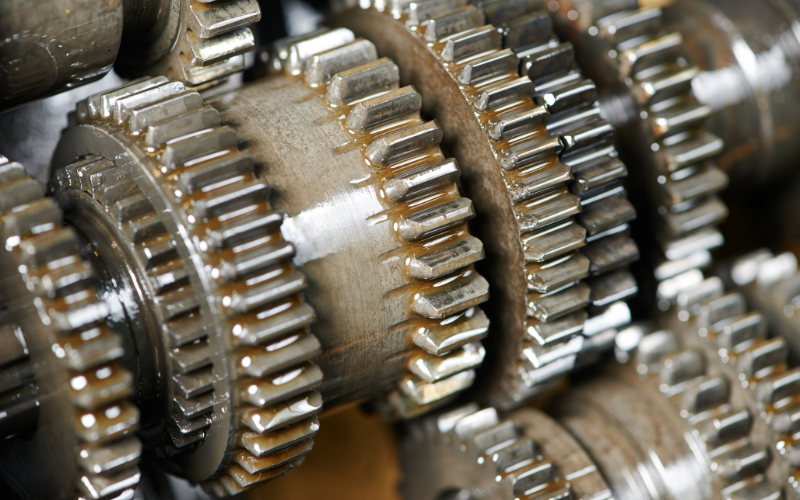
Your vehicle’s transmission, essentially its gearbox, plays a crucial role in adjusting various components. Transmission ensures smooth acceleration and deceleration, enhancing your driving experience and safety.
If you hear the thumping sound emanating from the front of your vehicle, it might be related to the transmission.
To investigate this, head to a quiet, well-paved road and shift through your gears. Remember not to use the brake pedal. If the noise persists, it’s advisable to have it examined.
It’s important to note that transmission repairs are both easy and inexpensive. They may entail a complete transmission rebuild or repair, costing up to $3,500.
If your transmission isn’t wholly compromised, you can check and replenish all your vehicle’s fluids. Be careful not to overfill them. While this doesn’t guarantee a solution to the problem, it’s a worthwhile step that might spare you from costly repairs.
5. Damaged Exhaust System
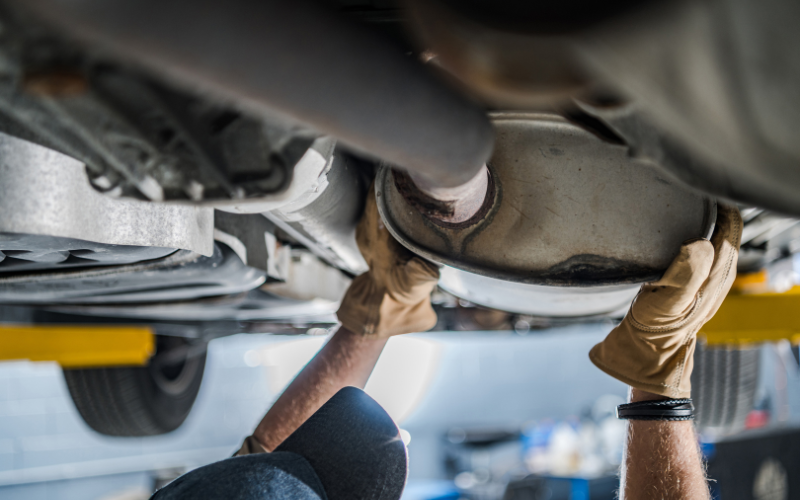
If you notice that the thumping sound becomes frequent when you come to a stop without turning off the engine, your exhaust system may be the culprit.
It’s crucial to have your vehicle inspected if you suspect an issue with the exhaust. Otherwise, it could potentially lead to the leakage of harmful carbon monoxide.
Here’s a step-by-step guide to address this issue:
- Step 01: Elevate the vehicle using a car jack.
- Step 02: Remove the muffler located at the rear of the exhaust system.
- Step 03: Disconnect the middle section of the exhaust from the catalytic converter.
- Step 04: Take off the piping from the hangers.
- Step 05: Replace any worn rubber hangers with new ones.
- Step 06: Install the new muffler onto the hangers.
- Step 07: Place a new gasket and securely fasten the flange.
- Step 08: Tighten the bolts and ensure the exhaust is aligned correctly, with no contact against critical vehicle components.
- Step 09: Conduct a test drive to confirm that the thumping noise has ceased.
6. Wheel Bearing Inspection and Replacement

Wheel bearings are crucial components that facilitate the rotation of your wheels by connecting various parts. If you experience an inconsistent thumping noise after changing the brake while changing speeds, it’s time to inspect your wheel bearings.
You can perform this check at home by following these steps:
- Step 01: Use a car jack to lift your vehicle.
- Step 02: Loosen the lug nuts on the wheel you intend to inspect, but wait to remove them.
- Step 03: Remove the tire by taking out the lug nuts.
- Step 04: Take off the brake caliper and its bracket.
- Step 05: Remove the outer wheel bearing.
- Step 06: Extract the rotor by pulling it with both hands.
- Step 07: Remove the inner wheel bearing.
- Step 08: Before installation, make sure to apply a generous amount of grease to the new bearing.
- Step 09: Reinstall the cotter pin.
- Step 10: Replace the hub.
- Step 11: Reinstall the rotor and caliper.
- Step 12: Put the tire back on and secure it with the lug nuts.
- Step 13: Conduct a test drive to ensure that everything is functioning correctly.
To assess the wheel bearing’s condition, jack the car and place a dial indicator on the hub while gently rocking the tires back and forth. If the indicator shows a measurement exceeding 0.005, replacing the wheel bearings promptly is advisable.
Read Also: Why Do My New Brakes Smell Like Burning Rubber? (Fix Now)
FAQs
What is a thumping sound a warning of?
A thumping sound with new brakes in a vehicle can be a warning sign of various potential issues, including
- Tire problems (uneven tread, low pressure)
- Damaged wheel bearings
- Worn-out brakes or rotors
- Transmission problems
Identifying and rectifying the issue is crucial to ensure safety and vehicle performance.
Is it safe to drive with a thumping sound?
Driving with a thumping sound in your vehicle is not safe. Such sounds may indicate severe mechanical issues with critical components like the engine, transmission, or suspension.
Continuing to drive can lead to further damage, potentially causing accidents or costly repairs. It’s essential to have the problem diagnosed and repaired promptly by a qualified mechanic.
Read Also: How Long Can You Drive On Grinding Brakes? (Is It Safe)
Final Words
Hopefully, you are now clear about the culprits about why does new brakes make thump noise.
Numerous factors can contribute to a thumping sound in your car, ranging from straightforward issues like tires to more intricate ones like faulty transmissions.
Fortunately, many of these problems can be addressed at your home’s convenience. DIY repairs not only enable you to grasp your vehicle’s condition but also help you save on labor expenses.

Meet Zayan, the mechanical genius behind the highly acclaimed brakes problems and solutions website. With over a decade of hands-on experience in the automotive industry, Zayan has become a trusted authority in the realm of brake systems.
His passion for cars, coupled with his expertise in solving complex brake-related issues, has earned him a devoted following of car enthusiasts, mechanics, and everyday drivers seeking reliable guidance.
